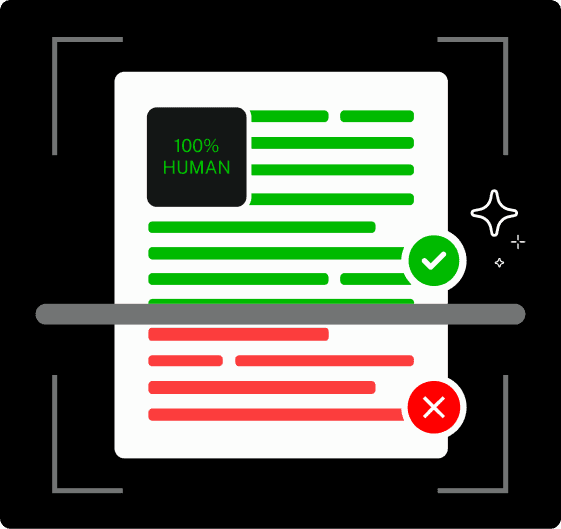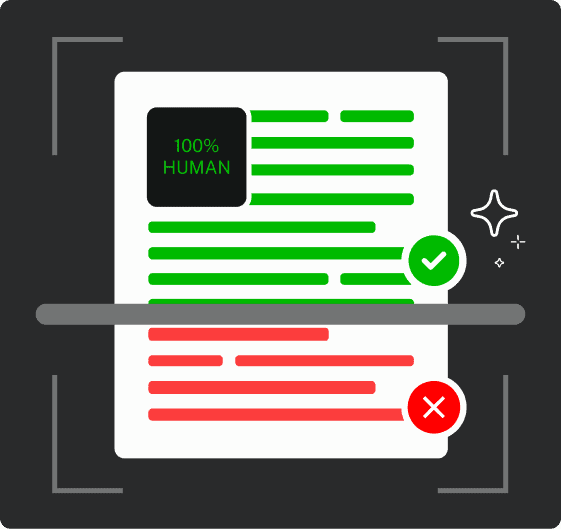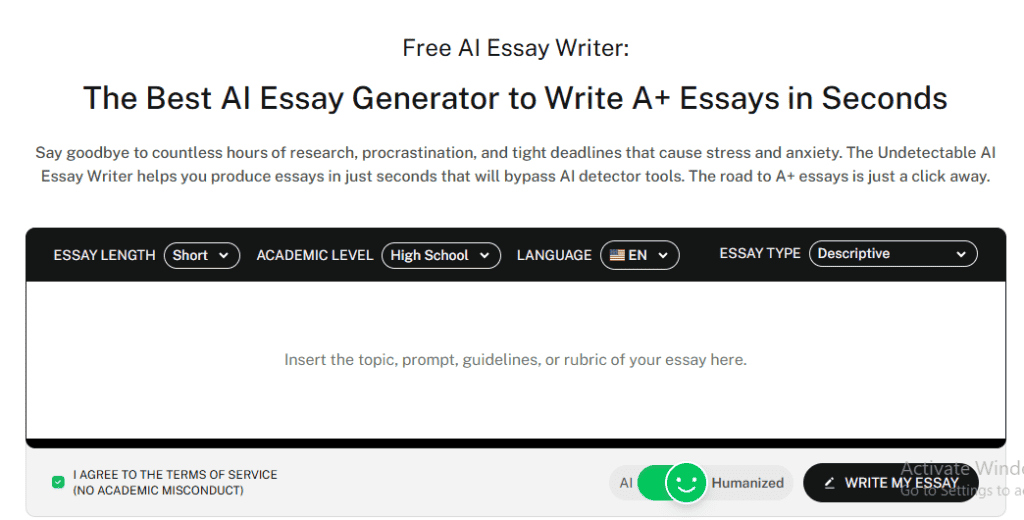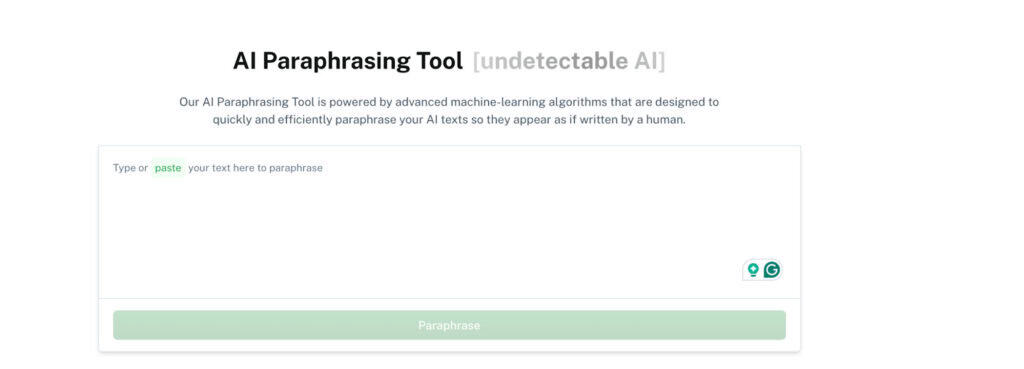A rhetorical analysis essay, as the name suggests, is an analysis of someone else’s writing and how they use not only words but also rhetorical techniques to influence their audience in a certain way.
This means the analysis is less concerned about what the author is saying than how they are saying it.
The structure of this type of writing features three typical parts: an initial section that presents the work followed by an examination segment of your chosen article and concluding remarks that summarize crucial rhetorical aspects.
This article covers these types of essays while providing guidance to help writers on how to write a rhetoric analysis.
Difference Between a Rhetorical Analysis and Other Essays
You might ask, “what is a rhetorical analysis,” and what sets it apart from a conventional essay?
Unlike traditional essays, a rhetorical analysis does not debate the message itself.
Instead, it examines the author’s techniques and strategies to pass his message.


Never Worry About AI Detecting Your Texts Again. Undetectable AI Can Help You:
- Make your AI assisted writing appear human-like.
- Bypass all major AI detection tools with just one click.
- Use AI safely and confidently in school and work.
While a literary analysis might focus on themes and symbolism, and an argumentative essay aims to convince readers of a particular viewpoint, a rhetorical analysis dissects the author’s persuasive methods and effectiveness.
Key Rhetorical Appeals and Strategies to Analyze

Writing a rhetorical analysis requires you to evaluate and break down the author’s composition design to achieve certain effects on readers.
The following section presents essential rhetorical strategies as well as appeals you should evaluate before analysis:
Ethos: Establishing Credibility and Trust
As an author, you can build ethical appeal by establishing your expertise in a particular subject.
Start your presentation by sharing your professional experience and knowledge in the field you are discussing.
Carefully choose language and tone appropriate for your intended readers and show awareness of current events.
The aim of this is to establish yourself as knowledgeable and engaged with the topic.
Pathos: Appealing to Emotion and Persuasion
Pathetic appeal works by stimulating emotional responses that let readers understand through their personal feelings and past experiences.
Connection with emotions requires you as a writer to use specific methods for creating powerful emotional responses in your writing.
Some include sharing personal anecdotes and engaging in storytelling that draws readers into your narrative.
You can also appeal to shared values and beliefs to create common ground with your audience.
This will involve referencing universal human experiences that readers can relate to, thus creating a deeper connection with them.
Logos: Using Logic and Reasoning to Convince
Logos, or logical appeal, refers to the use of reasoned argument to persuade.
Authors often present statistical data and research findings to prove their claims.
This type of appeal is common in academic writing, where you establish transparent cause-and-effect relationships to demonstrate the logical progression of your arguments.
Other Rhetorical Strategies (Diction, Tone, Repetition, Metaphors)
You can use additional techniques and key rhetorical appeals to strengthen your arguments.
Choosing words or diction creates specific effects or connotations that reinforce your message.
Your tone also reveals your attitude toward the subject and helps establish your relationship with readers.
Strategic repetition of key points helps emphasize important ideas and ensure they resonate with the audience.
Additionally, writers often employ metaphors and analogies to create memorable comparisons that clarify complex concepts.
This involves using varied sentence structures to influence pacing and emphasis, guiding readers through their argument.
How to Write A Rhetorical Analysis
Here are some tips on how to write an exceptional rhetorical analysis:
Step 1: Read and Understand the Text
Approach the text through multiple careful readings.
Your first reading should focus on getting a general understanding of the content and main ideas.
During your second reading, work on identifying specific rhetorical strategies and appeals used by the author.
The third reading should involve taking detailed notes on particular examples and analyzing their effects on the audience.
Throughout this process, consider the historical and cultural context of the piece better to understand the author’s choices and their impact.
Step 2: Develop a Strong Thesis Statement
A strong thesis statement should explain precisely how the author employs rhetorical techniques.
Your thesis statement needs to outline the main rhetorical approaches of the author while analyzing their effectiveness in achieving their goal through pathos, ethos and logos.
Analyze how the author approaches their intended readers while taking into account the historical period during which the work was produced.
Based on your examination of particular rhetorical approaches evaluate the work’s effectiveness along with a declared assessment of its rhetorical success.
Step 3: Outline Your Essay for Logical Structure
A strong rhetorical analysis requires careful organization to present your arguments effectively.
Create a clear organizational structure with a compelling introduction providing context and your thesis statement.
The main section should present your evaluation of particular rhetorical elements through supported evidence that details specific analyses.
Uniform transitions between your analysis segments should connect each thought sequence to help readers follow your assessment.
Draw your conclusion by integrating every point of analysis into a unified argument about the rhetorical strength of the text.
Step 4: Write an Engaging Introduction
Your introduction serves as the foundation for your entire analysis.
Start by providing relevant background information that helps readers understand the context of the work you’re analyzing.
Identify the text, author, and historical or cultural context that influenced its creation.
Present your thesis statement as the culmination of your opening paragraph, effectively previewing the main points of your analysis.
Most importantly, begin with an engaging hook that draws readers into your analysis and establishes the significance of your rhetorical examination.
Step 5: Write Analytical Body Paragraphs
Each body paragraph requires a focused analysis of specific rhetorical strategies supported by textual evidence and a detailed examination of their effectiveness.
To make your readers follow your thought process, divide this part of your essay into paragraphs focusing on a concept.
Undetectable AI’s Essay Writer streamlines this process by helping generate clear topic sentences, suggesting analytical approaches, and maintaining consistent analytical depth while varying language.
For instance, we can help craft a sophisticated rhetorical analysis example like this:
“Obama’s repetition of ‘Yes We Can’ throughout his 2008 victory speech serves multiple rhetorical functions.

This phrase builds emotional momentum while establishing a sense of collective power, combining pathos with ethos to inspire and unite his audience.
The simplicity and rhythm of the phrase make it memorable, while its inclusive language creates a strong bond between speaker and listeners.”
Step 6: Craft a Powerful Conclusion
The conclusion section of your analysis should restate your main arguments and emphasize if you think the author has achieved their goal.
Note that you don’t introduce new information in this place— you only rely on the point you have discussed in your essay.
Examples of Rhetorical Analysis Essays
Using rhetoric for persuasion proves difficult when people lack templates to guide their use.
The below sections show various rhetorical analysis essay example in order for you to understand what an excellent analysis essay should contain.
- Analysis of an Advertisement: Nike’s ‘Just Do It’ campaign combines minimalist visuals with powerful narratives. The advertisements feature everyday athletes alongside professionals, using parallel structures to equate their struggles and triumphs. This rhetorical choice democratizes athletic achievement while building brand ethos through emotional storytelling.

The sparse text and striking imagery create visual rhetoric that reinforces the brand’s message of universal potential.
- Analysis of a Political Speech: “Obama’s repetition of ‘Yes We Can’ throughout his 2008 victory speech serves multiple rhetorical functions. This phrase builds emotional momentum while establishing a sense of collective power, combining pathos with ethos to inspire and unite his audience.
The phrase contains straightforward language and its rhythmic structure makes it easy to remember and at the same time establishes unity between the speaker and audience.”
Common Mistakes to Avoid in a Rhetorical Analysis Essay
Several mistakes are typically found in rhetorical analysis texts written by writers including:
Summarizing Instead of Analyzing
Many writers fall into the common mistake of providing summaries instead of performing true analysis when evaluating rhetoric.
This type of essay analysis requires writers to dig deeper than summarise by studying both methods and reasons authors use to construct their argument.
For instance, rather than writing, “The author discusses healthcare costs,” a more substantial analysis would state, “The author employs stark statistics about medical bankruptcy to create a sense of urgency about healthcare reform.”
Ignoring the Author’s Purpose and Audience
Successful rhetorical analysis requires careful consideration of several key factors about the original work.
As a writer, you must examine who comprises the intended audience and how this affects the author’s choices.
You should also analyze what the author tries to achieve through their writing and how their specific rhetorical choices reflect these goals.
Understanding why the author selected particular strategies over others can provide valuable insights into their overall approach to persuasion.
Failing to Provide Textual Evidence
Support your analysis with specific examples from the text.
Quote directly when the author’s exact words are significant, and paraphrase when demonstrating broader patterns.
Weak Thesis Statements That Lack Focus
Avoid vague statements like “The author uses many rhetorical strategies.”
Instead, make specific claims about the types of techniques and their effectiveness.
How AI Can Help You Write a Strong Rhetorical Analysis Essay
Modern AI tools offer valuable support throughout the rhetorical analysis writing process.
Here’s how Undetectable AI can help:
Generating an Outline and Structuring Your Essay
Writing a killer rhetorical analysis essay just got a whole lot easier. With our AI Essay Writer, you can create any type of essay, perfectly tailored to your needs, in just a few clicks.

No more staring at a blank page—get a solid draft fast, and when you’re ready to make it sound even more natural and engaging, our AI Humanizer is right there to polish it up.
Give it a try in the widget below and see how effortless essay writing can be.
Ensuring Human-Like Writing and Avoiding AI Detection
Our Paraphrasing tool serves as an invaluable tool for improving sentence clarity and flow in your rhetorical analysis.

It helps enhance sentence variety while maintaining your analytical insights, clarifies complex ideas without oversimplifying them, strengthens transitions between sections, and maintains an appropriate academic tone throughout your work.
This careful attention to language helps ensure your analysis remains sophisticated and accessible.
Final Tips for Writing a High-Quality Rhetorical Analysis Essay
Here are some final Tips to follow when writing a high-quality rhetorical analysis essay;
- Focus on Analysis Rather Than Summary: Understanding what a rhetorical analysis means going beyond basic description. Instead of merely restating content, examine how specific techniques create meaning and influence readers.
- Use Specific Examples to Support Your Points: Every claim in your rhetorical analysis example should be backed by concrete evidence from the text. You can even quote key phrases and explain their rhetorical significance.
- Consider Multiple Interpretations: Strong rhetorical analysis essays acknowledge that persuasive techniques can affect different audiences in various ways. Explore these nuances in your analysis.
- Maintain an Objective Tone While Making Explicit Judgments: While your rhetorical analysis example should present definitive arguments, keep your tone professional and evidence-based rather than emotional.
- Connect Rhetorical Strategies to Their Effects: Explain how each technique influences the audience. Don’t just identify strategies – analyze their effectiveness.
- Review and Revise for Clarity and Coherence: Spend dedicated time to make your arguments understandable while properly supporting your thesis through evidence.
Conclusion
Many students find rhetorical analysis writing intimidating at first yet this form of writing proves to be simpler than they expect.
Spending significant time deeply analyzing the draft will result in a better-quality essay.
Use Undetectable AI‘s humanizer and AI Essay Writer to maintain the authenticity of your voice and make it as readable as possible.
Then, you’ll be ready to submit your essay, knowing you have made it the best it could be.
